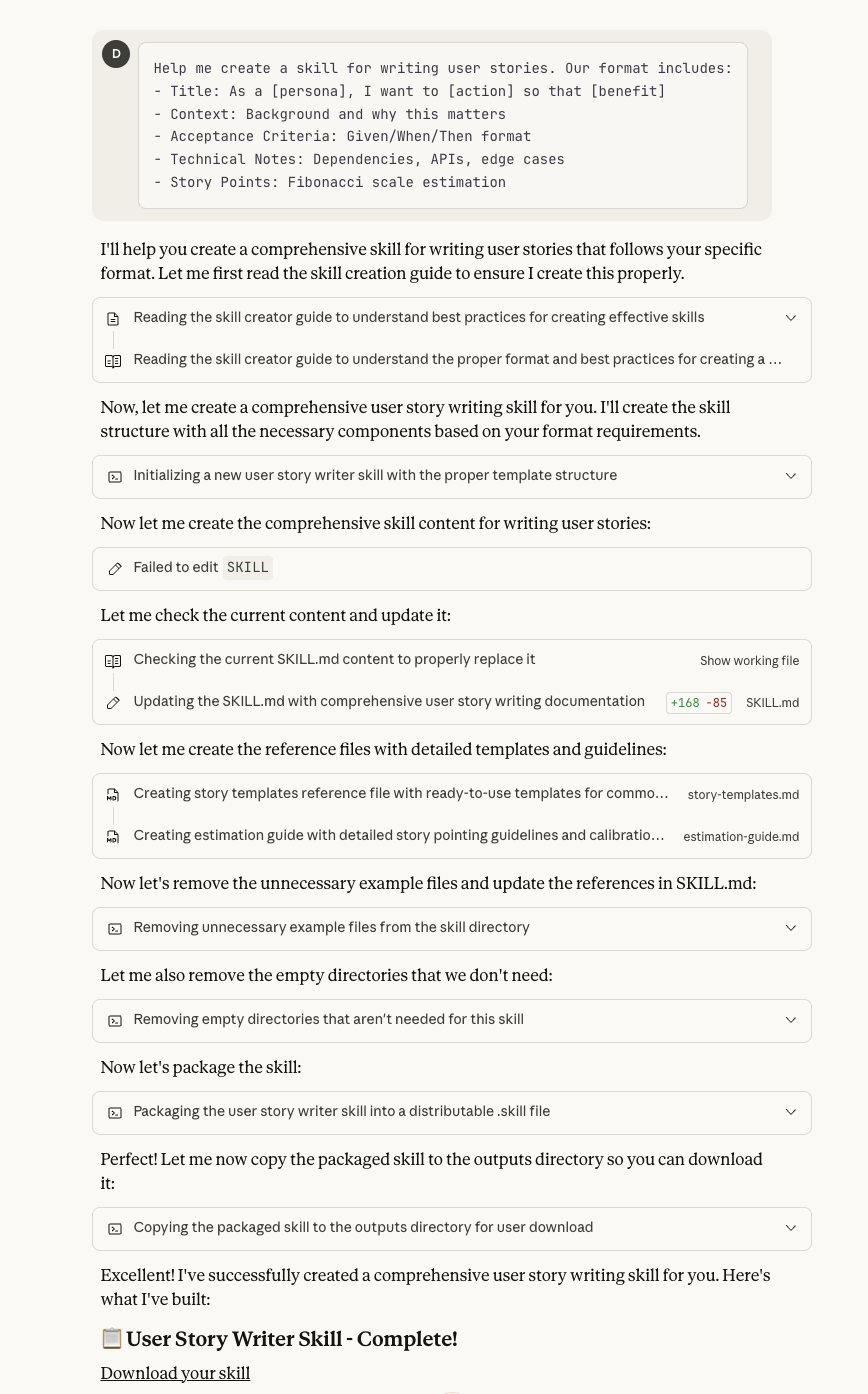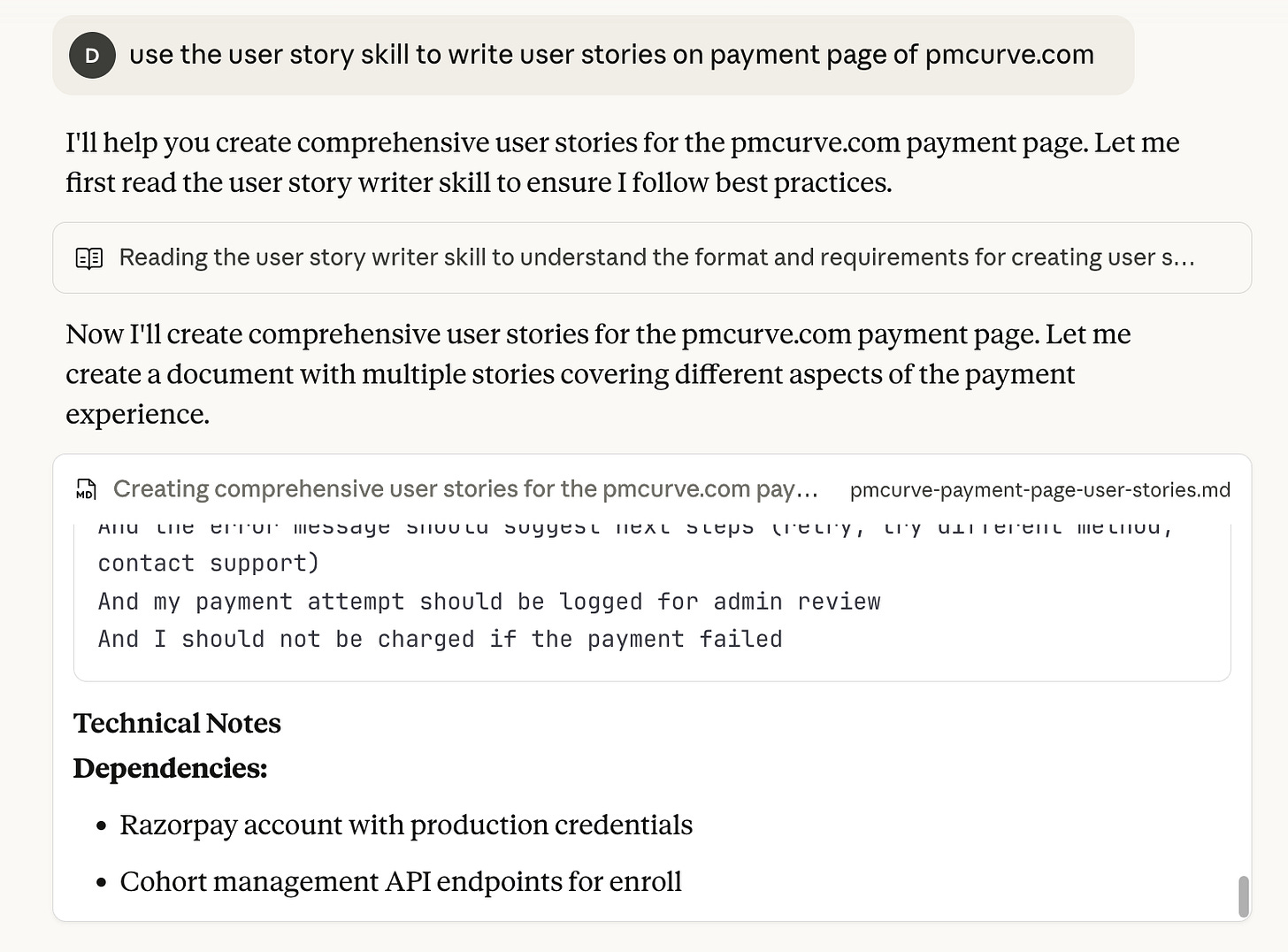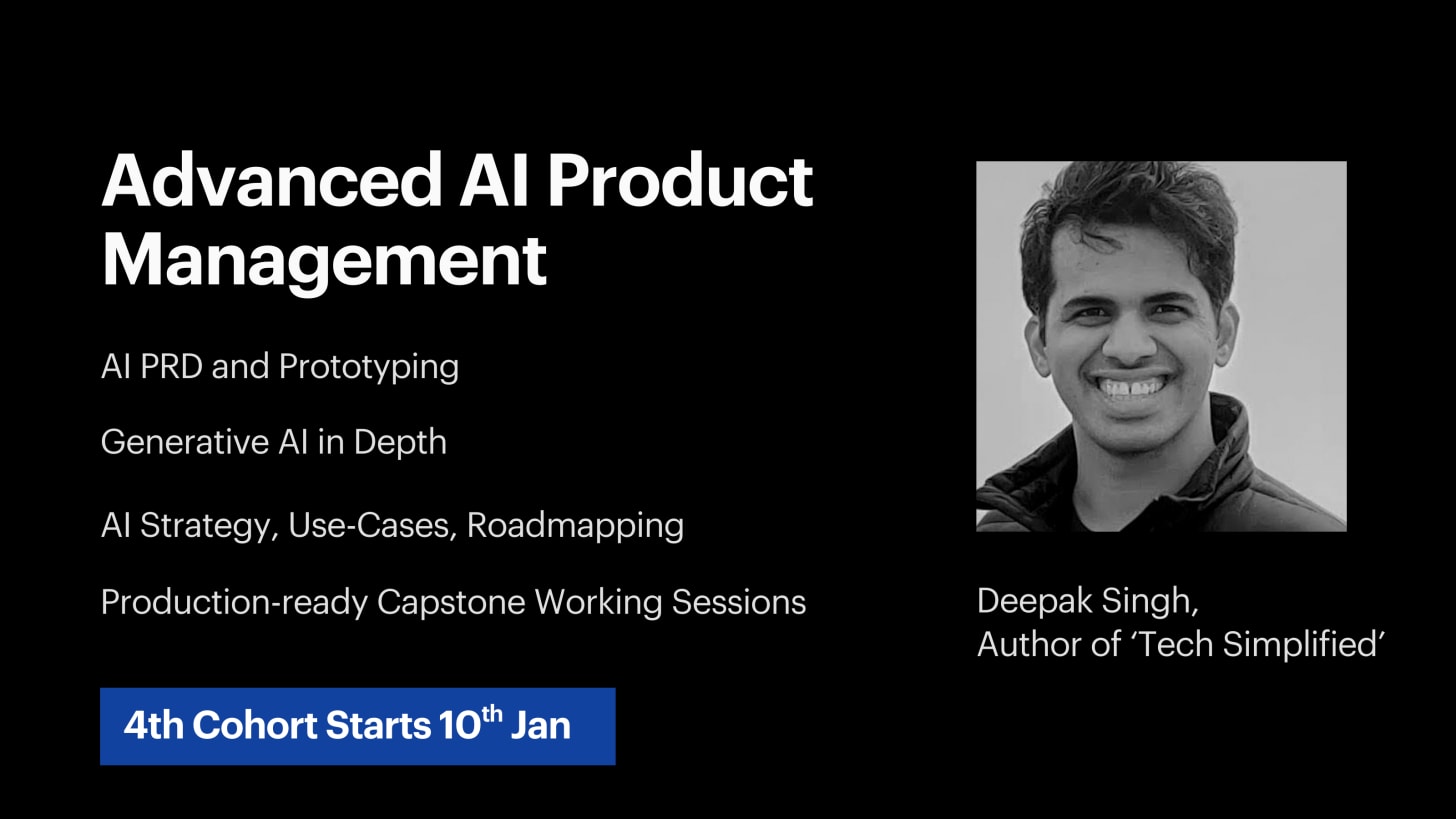Claude Skills: A Simple Guide for AI Builders
Claude launched Skills a month back. And it’s a useful product to get familiar with even for people who use AI, not just AI builders.
The purpose of this guide is to help you understand how to build your first skill that you can use on a daily or weekly basis. It’s also written in a simple and helpful tone, so that it becomes easy to digest for most people out there.
Let’s start with the first question: What is Skills?
Understanding Skills
Simply put, skills are set of resources that you provide Claude to do a particular task. Suppose you want a document written in a certain format every time, you can provide a set of resources to Claude, and it will create the document in that format every time.
If you are looking for an analogy to understand skills, the closest one is a guiding document for a new hire. When onboarding new hires, we provide them a guiding document containing templates, and examples for various tasks. Product teams provide PRD templates and examples so that a new PM can write PRD, marketing teams used blog post templates and sample posts, etc. The new hire uses the guiding document can be used to do a standard task in a predictable manner, and you can given these templates to someone else as well.
Skills can contain resources such as
general instructions
successful examples of the task
failed examples of the task
coding scripts if needed
Here is an example of a skill useful for product managers — writing user stories. As you can see, the skill has
name of the skill
description of the skill
purpose
when to use
input requirements
output format
process
best practices
examples
While all of it is easily understood, we don’t know why it’s formatted as such. Don’t worry it though, we cover it in the next section.
---
name: user-story-writer
description: Creates user stories following [Company] standards with acceptance criteria, technical notes, and story point estimates
---
# User Story Writing Skill
## Purpose
Generate well-structured user stories that follow [Company]’s format and include all required elements for engineering handoff.
## When to Use
- Breaking down epics into implementable stories
- Converting feature requests into structured requirements
- Creating technical stories for infrastructure work
## Input Requirements
- Feature description or epic
- Target user persona(s)
- Known technical constraints
- Priority/timeline context
## Output Format
[Include your template here]
## Process
1. Clarify the user outcome
2. Identify persona(s) affected
3. Break into atomic, testable stories
4. Add acceptance criteria (Given/When/Then)
5. Document technical dependencies
6. Estimate complexity
## Best Practices
- One user story = one testable outcome
- Acceptance criteria must be objective
- Include API/integration dependencies
- Flag security/privacy considerations
## Examples
[Include 2-3 complete examples]Format of a Skill
Claude Skills are stored in a .md file extension, which represents markdown files. Markdown is an easy-to-use markup language. Markup languages are used to format and display content on web pages and in documents.
The above format should now be understandable now. A markdown file can be converted to html if needed by using software and output can be rendered on a website easily.
Putting the above markdown file for user story in an app like markdowntohtml.com converts it to the following:
As you can see, a single # represents Heading 1, ## represents Heading 2, etc. But you don’t need to remember the notation since LLMs do a pretty great job at creating markdown files from other documents.
So now that we understand the Skills format, let’s understand why Claude needed to build Skills.
Is there a need?
You don’t need to create a guiding document if you need to do a task only once. Similarly, a skill isn’t useful for one-off tasks. You need it in case of repetitive tasks.
Another key question around the need is — why can’t I store all the instructions, examples, and more in a word document, and upload it whenever I need to use the skill. The answer to this question is that you can do that to save time for repetitive tasks, and there is a good chance the results will be identical. After all, the instructions to the LLM are the same.
So where does it become useful? To answer that, you will need to first understand how to create and use a skill. It becomes way easier to explain the need once you understand that.
Building a Skill
To build a Skill, we are going to start with writing a simple prompt in Claude Sonnet. You would need a Pro account to access Skills.
Help me create a skill for writing user stories. Our format includes:
- Title: As a [persona], I want to [action] so that [benefit]
- Context: Background and why this matters
- Acceptance Criteria: Given/When/Then format
- Technical Notes: Dependencies, APIs, edge cases
- Story Points: Fibonacci scale estimationClaude starts working, and does tons of things under the hood to create a skill as you can see in the screenshot below. But the best thing is - you don’t need to do much to create your first skill.
Next Steps
You can download the skill with the CTA, or save it. I would recommend saving it directly if you are happy with the skill and plan to use it in future.
If you have downloaded the skill, and modified the instructions or examples manually, you can add the skill by going into settings > capabilities and uploading it there
Let’s go back to the need question — one core problem that Skills solve is that they reduce all the manual effort to find and upload the right document. I can just write the prompt simply and it will fetch the skill.
There is another benefit of Skills, we can combine multiple Skills on-the-go to get a task done. For example, here is a simple workflow of launching a new feature. Note that Claude can’t automatically chain these skills into a workflow - you’d need to manually invoke each one.
Workflow: Launch New Feature ├── 1. market-research skill → Competitive analysis ├── 2. prd-writer skill → Product spec ├── 3. user-story-writer skill → Engineering stories ├── 4. go-to-market skill → Launch plan └── 5. metrics-dashboard skill → Success metrics
Another key benefit of Skills is that it can work in sync with other capabilities of Claude like Computer Use, or MCP.
Architecture of a Skill
We will skip the architecture of a skill since it’s useful when you start using Anthropic APIs to build Skills in AI products. But if you are interested, you can read this engineering blog by Anthropic team:
https://www.anthropic.com/engineering/equipping-agents-for-the-real-world-with-agent-skills
I would want to pay attention to the following while you go through documentation around Architecture:
Understand how progressive loading works in skills
Understand how you can optimizes token costs using Skills
Making a Skill Useful
The user-story-writer skill that we built using Claude Sonnet is useful but has limitations in real-life.
First of all, it needs to adhere to guidelines of a product org. The good thing is you can either ask LLMs to make the specific changes or download it yourself and modify.
Second, it lacks the context of a product or org. Context can again be added by modifying the file.
Third, a skill is as good as the person creating it. If a PM doesn’t know how to write excellent PRDs, they can’t judge whether AI is able to write a mediocre PRD or excellent one. In absence of this judgement, they would get mediocre results and feel good, whereas the reality is that AI could have generated much better output if they had strong product sense/ judgement. The skill becomes a “garbage in, garbage out” multiplier for those without a strong product sense.
A Skill can be made useful through rigorous evaluation. You can generate different versions of PRDs by modifying the skill, and compare them to arrive at the best version of the skill.
Conclusion
Claude Skills is a terrific product for the end user. It can have high impact on output and productivity of a team. Even better is that it looks and feels simple, which is essential for high adoption. It is another useful addition to the suite of products Claude has launched in last year - Claude Projects, Computer Use, MCP.
From a strategic lens, it allows Claude to increase the switching cost of the product. Once sufficient number of skills are built, the end user will find it hard to move out of Claude. On the other hand, Claude allows you to down the skills, and we might see other apps like ChatGPT supporting import of such Skills. So the switching cost isn’t very high.
If you are interested in building or managing AI products, you would find this cohort-based program I run useful. Do check it out:
https://www.pmcurve.com/program/advanced-ai-for-pms
This would be all for this post,
Deepak








